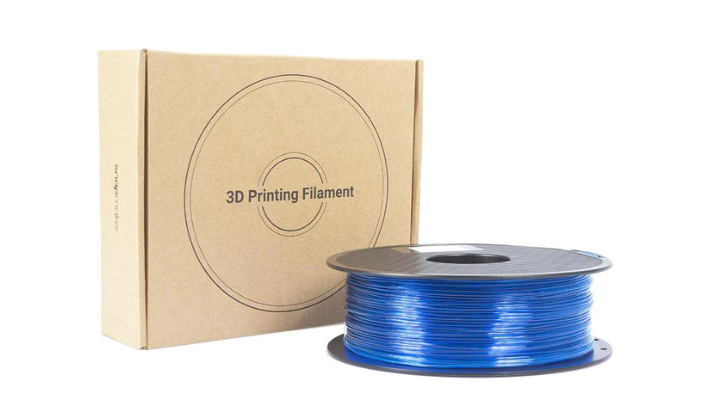Do you want to use PETG filament for 3D printing but need help knowing where to start? This worry is understandable, given that so many different brands and types of PETG are available on the market. But don’t be alarmed! We can aid in your search for the ideal best PETG filament.
In recent years, PETG has dominated the market for 3D printing materials. It has replaced chiefly ABS as the second most popular filament after PLA because it is simple to print, food-safe, long-lasting, and reasonably priced.
PETG is frequently used in practical applications that require some flexibility and regular use due to its high strength, resilience to impacts, and temperature tolerance compared to PLA.
You’ll need to decide which blend to pick up once you’ve decided to print on PETG. It can be challenging to sort through all the spools available on the consumer market because there is an infinite variety. You must pick a source whose goods you believe to be dependable and straightforward to use.
What to Look for When Buying PETG Filament
Diameter, when purchasing PETG filament, the first thing to check is that the brand is in the correct diameter for your printer. When looking for a 3D printer filament, 1.75mm is the most overall diameter because it is compatible with most 3D printers. The diameter of the spool is another critical factor. You must ensure that the spool fits your printer’s compartment if your 3D printer stores the filament inside the device. If not, you must use an external spool holder.
Stringing Proclivity, Comparatively to other 3D printer filament materials, even the best PETG filament tends to print a touch stringy. Finding the ideal print parameters for your particular 3D printer and the PETG filament brand you’re using is the most significant element in preventing PETG stringing. While purchasing PETG, there are a few factors to consider that can lessen stringing.
Continuity of color and the resistance of PETG 3D printing filament to some external substances are among its main drawbacks. This creates issues when painting and adhering to 3D printers, but it also affects the coloring pigments in the PETG material.
It may be challenging to produce PETG filaments with consistent colors. A specific color may vary in shade from one spool to the next or even within a single spool.
If you are printing a large object that needs more than one spool to finish, this could be problematic. If the colors aren’t uniform, there can be a noticeable seam where one spool finishes and another begins. Likewise, maintaining a constant shade between prints is ideal for quality control and satisfying client expectations if you sell your 3D prints to generate income from your 3D printer.
Accuracy in Dimensions, To produce prints of excellent quality, PETG 3D printer filament must have good dimensional precision. The amount by which the diameter will deviate from the advertised diameter is called dimensional accuracy, also known as diameter accuracy. There will be spots on the spool where a 1.75mm filament with +/- 0.03mm dimensional accuracy is as large as 1.78mm or as small as 1.72mm in diameter.
Because there is less variation in the size of the filament, smaller dimensional accuracy leads to better printing outcomes. Substantial variations in your filament’s size can cause uneven extrusion, gaps, cracks, holes, and even 3D printer jams because the extruder is putting out more or less material than it believes it is.
Spinning a spool, another critical aspect of selecting the optimum filament petg is proper spool winding. High-quality filaments ensure the tension on their spools remains constant to prevent tangling and breaking. If a spool becomes entangled, it may result in excessive pressure on the spool feeding the printer, leading to under-extrusion, filament breakage, and extruder jams.
